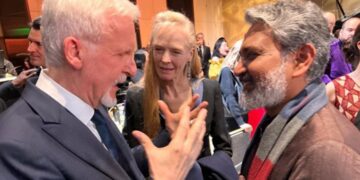Ampati: Nobin Arengh, a pioneering fish farmer from Monabari village in Meghalaya’s South West Garo Hills, was awarded the ‘Best Fish Farmer Award’ during the National Fish Farmers’ Day celebrations held at CAU, College of Fisheries, Lembucherra, Tripura, on July 10.
This recognition marks a significant achievement for the district and the state of Meghalaya’s aquaculture sector.
Arengh is celebrated for his innovative and sustainable approach to fish farming, setting new benchmarks in the industry.
He embarked on his fish farming venture on his landholding in Monabari in 2016, with crucial support from the Fisheries Department.
The project, costing Rs. 1,04,475, was funded through a 60% government subsidy (Rs 62,685.06), a 15% personal contribution (Rs 15,671.27), and a 25% bank loan (Rs 26,118.78) from the Rashtriya Krishi Vikas Yojana (RKVY) Corpus Fund 2012–13.
His farm strategically stocked approximately 4,000 fingerlings, including Indian Major Carps (Rohu, Katla, Mrigal) and Exotic Carps (Common Carp, Grass Carp, Silver Carp), alongside Wallago attu and Chitala species. This diverse selection aims to maximize water column utilization and enhance overall productivity.
Beyond traditional aquaculture, Nobin Arengh has successfully adopted integrated fish-duck farming, currently maintaining a stock of 26 ducks. This integrated approach further augments his income through the sale of ducklings and eggs.
The enterprise yields an estimated annual fish production of 1.2 to 2.0 metric tonnes, generating gross earnings ranging from Rs 3 lakh to Rs 4 lakh per annum. The produce is marketed locally, ensuring a consistent cash flow that supports reinvestment.
ALSO READ: Meghalaya Cabinet approves Film Tourism Policy 2025 to boost state as cinematic hub
Risa V.C. Sangma, Superintendent of Fisheries, Ampati, lauded Arengh’s unit for demonstrating “economic sustainability and enterprise viability.”
Sangma added, “The success of the model has also influenced neighboring farmers to pursue similar ventures, contributing to localized aquaculture development.”















